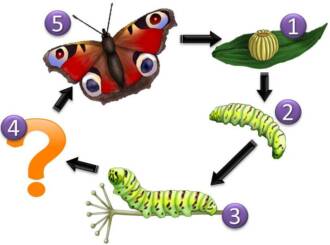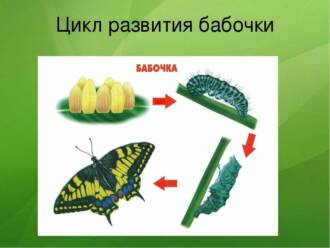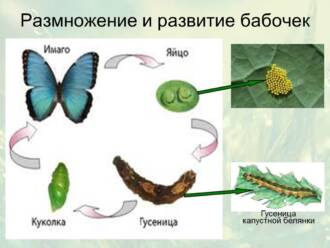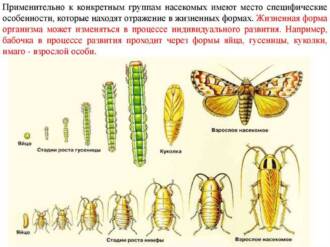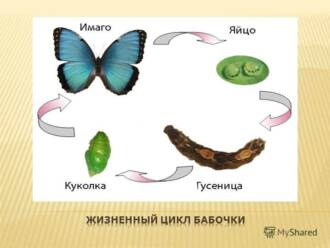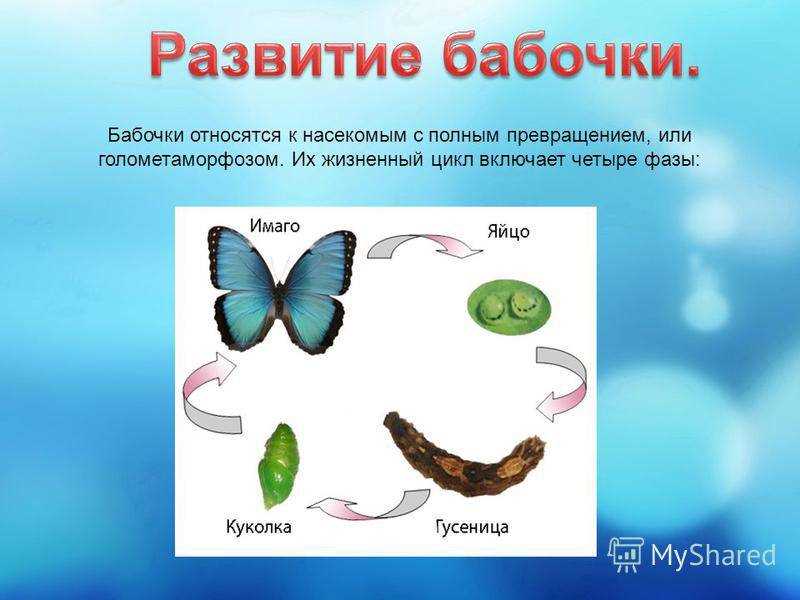
Butterfly life cycle is one of the most amazing and breathtaking phenomena of nature. This process consists of several stages, each of which has its own characteristics and significance for the development of the butterfly.
The first step in the life cycle of a butterfly is the egg.. The butterfly lays eggs on plants that will serve as food for future caterpillars. The eggs are usually small, round or oval in shape, and come in a variety of colors.
After that, the caterpillar stage begins. The egg hatches into a hungry caterpillar that actively feeds to gain enough food for the next stage of its life. The caterpillar gradually grows and sheds several times until it reaches its maximum size.
The third stage is the pupa. When the caterpillar reaches a certain size, it turns into a chrysalis. The pupa usually has a protective cover that helps it to survive from external influences. Incredible transformations take place inside the chrysalis, and an adult butterfly emerges from it.
The last stage is the adult butterfly.. When the transformation in the chrysalis is completed, the butterfly flies out of its cocoon. An adult butterfly has wings and can fly, which allows it to search for food and reproduce. At this stage, the butterfly is at the peak of its life and can live for several weeks or even months, depending on the species.
The life cycle of a butterfly is an amazing miracle of nature. Each stage of this process has its own uniqueness and importance for the development of the butterfly, allowing it to survive the metamorphosis and become a beautiful creature that decorates our world.
Butterfly life cycle stages
The life cycle of a butterfly goes through several stages, starting with an egg and ending with an adult insect. Each stage has its own characteristics and duration, and together they make up the amazing journey of a butterfly.
1. Egg
The first stage in the life cycle of a butterfly is the egg stage. The butterfly lays eggs on plants that will become food for future caterpillars. Eggs can be of different shapes and sizes, depending on the type of butterfly. Inside the eggs is an embryo that develops over time and prepares to hatch.
2. Caterpillar
After hatching from an egg, the butterfly turns into a caterpillar. The caterpillar is an active and appetizing creature that is constantly looking for food. It eats plant leaves and gradually grows, going through several stages of molting. The caterpillar also produces a silk thread from which it creates its protective shell - a cocoon.
3. Pupa
In the process of cocoon formation, the caterpillar turns into a chrysalis. The pupa is inside the cocoon and goes through the transformation phase. Amazing changes take place inside the pupa: the caterpillar body decomposes, and a new butterfly body is formed in its place. This process can last from several weeks to several months, depending on the type of butterfly and environmental conditions.
4. Adult butterfly
Ultimately, the chrysalis splits and an adult butterfly emerges from it. At first, it is soft and weak, but over time, the butterfly's wings get stronger and it is ready to fly. An adult butterfly is looking for a partner to reproduce and continue its species. It also plays an important role in the pollination of flowers and the distribution of pollen. The life cycle of a butterfly is completed when it dies, and the process begins again with the laying of eggs.
Thus, the life cycle of a butterfly is an amazing journey, including the stages of egg, caterpillar, pupa and adult butterfly. Each stage has its own unique characteristics and duration, creating a unique and colorful picture of the life of butterflies.
Egg
The egg is the first stage in the life cycle of a butterfly. It is a small, usually round shape that can be of various colors and sizes. Butterfly eggs are usually laid on plants that will serve as food for the larvae.
Butterfly eggs have a protective shell that provides protection from external factors such as moisture and cold. Inside the egg is an embryo that will develop into a larva. The process of egg development can take different times depending on the type of butterfly.
Butterfly eggs come in different shapes and placements. Some species lay eggs singly, while others lay them in groups or clutches. Eggs can be attached to plants, leaves, or branches. Some butterfly species choose specific plants to lay their eggs on because they provide ideal conditions for the development of the larvae.
The egg is the first stage of the butterfly's life cycle and represents the beginning of future development and transformation. From the egg begins the next stage - the larva, which will go through a series of changes before turning into a pupa.
Caterpillar
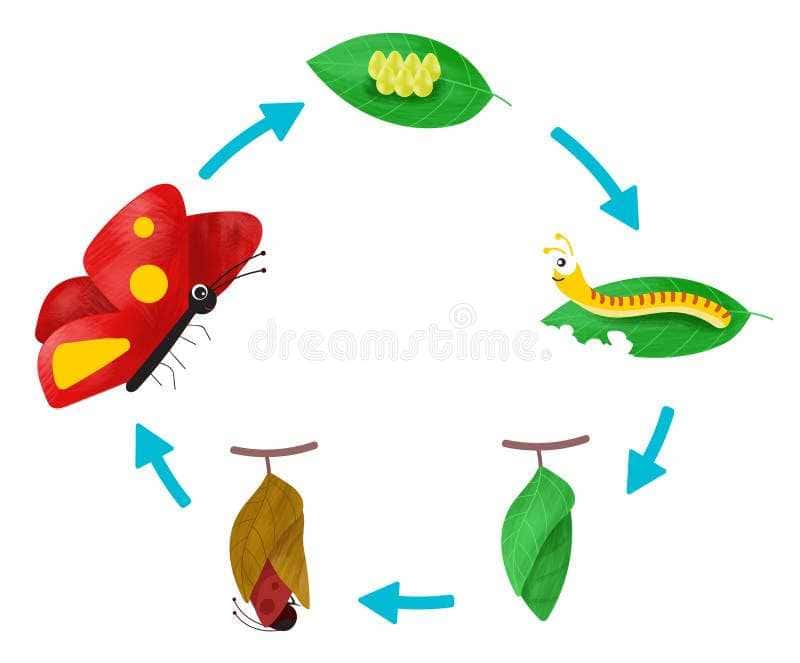
Caterpillars are the first stage in the life cycle of butterflies. They hatch from eggs and have a long and flexible body that consists of many segments. Caterpillars usually have bright colors that help them deter predators.
Caterpillars are well developed in terms of nutrition and actively feed on vegetation. They have strong jaws that they use to eat leaves and other plant materials. Some caterpillars have specialized diets and only feed on certain types of plants.
In the process of growth, the caterpillar passes through several molts, during which it changes its appearance and size. Caterpillars can also perform mimicry, mimicking the appearance of other creatures that are dangerous or distasteful to predators, in order to protect themselves.
Caterpillars actively feed and gain weight to reach a certain size before moving on to the next stage of their life cycle - the pupa. In this stage, the caterpillar creates a protective shell around itself and turns into a pupa, in which internal transformations occur and the future organs and structures of the butterfly are formed.
chrysalis
chrysalis - This is the second stage in the life cycle of a butterfly. At this stage, the transformation of the larva into a pupa takes place. The pupa is a closed stage of development in which global changes occur.
When the larva reaches a certain size, it stops feeding and starts looking for a suitable place to form a pupa. Usually the larva chooses a protected place, for example, in grass or on a tree branch.
The pupa has a special shape resembling a small bag or capsule. It is usually attached to the surface with silk threads that are secreted from the glands on the back of the larva. After that, the larva turns into a chrysalis, forming a pupal shell inside itself, from which a butterfly will then appear.
Global changes take place inside the pupa - the larva turns into a butterfly. Metamorphoses occur inside the pupa: wings are strengthened, legs and antennae are formed, and other changes in the external structure occur. This process can take from several days to several weeks, depending on the type of butterfly and environmental conditions.
Insect
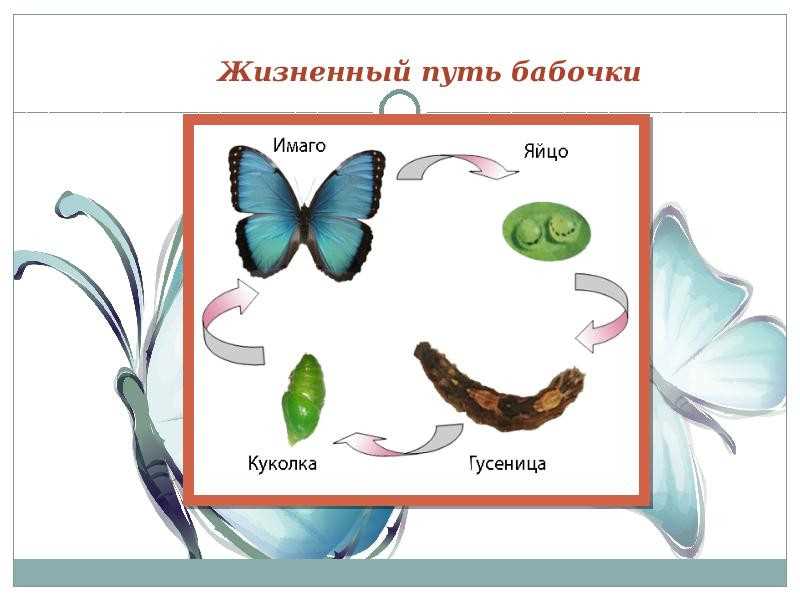
Definition
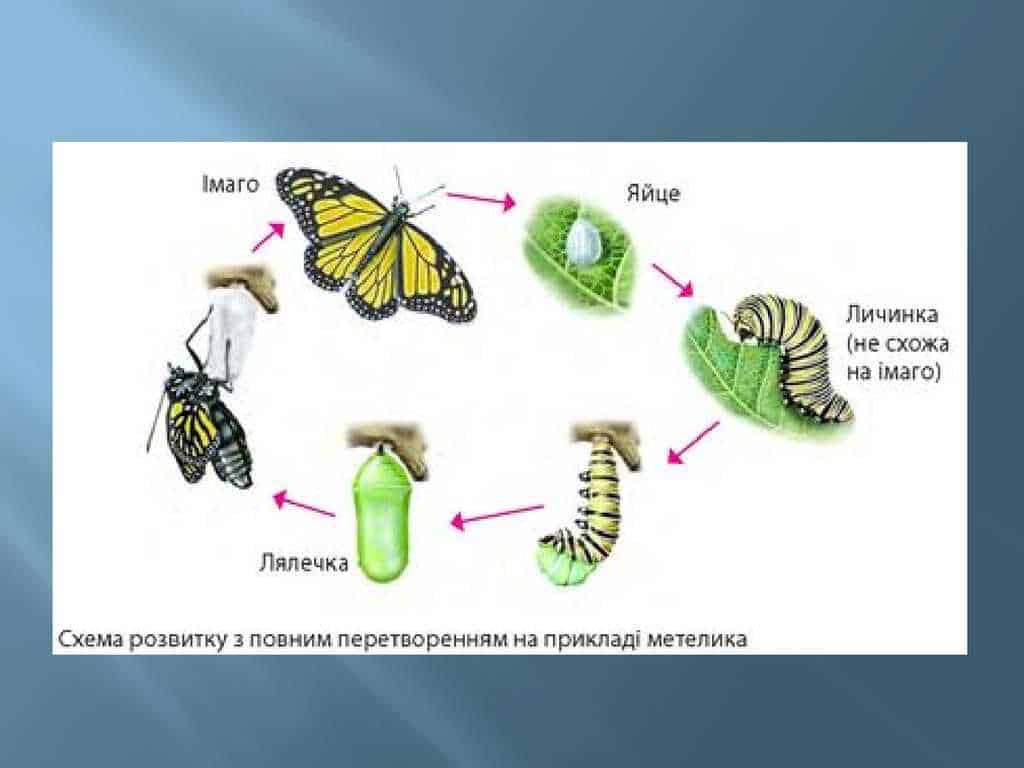
Insects are a class of animals that belong to the phylum Arthropoda. They are the most diverse group of living organisms, with about a million known species. Insects are distinguished by the presence of six legs, one paired attachment to the chest and a chitinous cover that covers their body.
Insect Anatomy
The body of insects consists of three segments: head, thorax and abdomen. On the head are sensitive antennae, eyes and mandibles, which are used for eating. The chest of insects consists of three sections, each of which has a pair of legs. The wings are also attached to the chest and allow the insects to move through the air. The abdomen of insects contains the organs of digestion and reproduction.
The role of insects in the ecosystem
Insects play an important role in the ecosystem. They act as pollinators, carrying pollen from one flower to another, allowing plants to reproduce. In addition, some insects are predators and help control pest populations. Some types of insects are also food for other animals.
Variety of species
Insects inhabit all corners of the planet, from the tropical jungle to the cold Arctic regions. They come in a variety of shapes and sizes, from tiny mosquitoes to huge beetles. Each insect species has its own specific role in the ecosystem and unique adaptations to its habitat.
Larva

The larva is the first stage of the butterfly's life cycle, in which it is after hatching from the egg. Externally, the larva is a small, long body with six legs and missing wings. She has a great appetite and her main goal is nutrition and growth.
During this stage of the butterfly's life cycle, the larva gradually grows by breaking through its skin several times. It goes through several stages, called instaria, at each of which there is a molt. During molting, the larva sheds its old skin and acquires a new, stronger one. This process allows it to continue its growth and development.
Features of the larva:
- The larva has mandibles adapted for feeding, which help it gnaw on leaves and other vegetation.
- It has special glands that secrete filamentous substances to build its cocoon or nest.
- The larva can have different colors and body shapes, depending on the type of butterfly.
- An important aspect of the life of the larva is its defense against predators. She can use various mechanisms, such as camouflage or distractions, to evade danger.
At this stage of the butterfly's life cycle, the larva actively feeds, grows and prepares for the next stage of its development - the chrysalis.
transformation
Metamorphosis is a phenomenon characteristic of the life cycle of butterflies. It occurs after the butterfly completes the larval stage and prepares to emerge from the chrysalis.
During the transformation, amazing changes occur inside the chrysalis. The body of the butterfly undergoes a metamorphosis, and it turns from a wingless larva into a beautiful and delicate butterfly.
The transformation occurs through a process called molecular reconstruction. The internal organs and structures of the larva are destroyed and then rebuilt in a new form, corresponding to the future butterfly.
The transformation process takes a certain time, which may vary depending on the type of butterfly. After the transformation is completed, the butterfly is ready to leave the chrysalis and begin a new life as an adult.
Metamorphosis
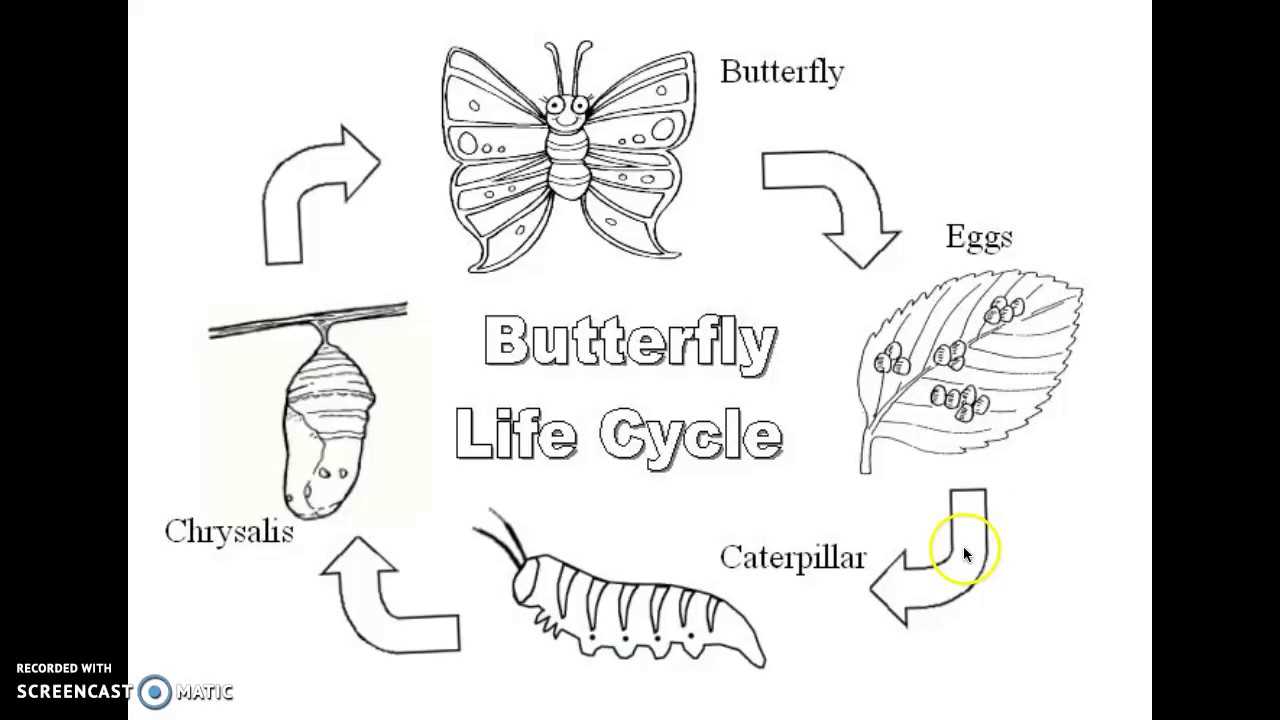
Metamorphosis is an amazing process of transformation of a butterfly from an egg to an adult insect. It goes through several stages, each of which has its own characteristics and significance.
egg stage
The first stage in the life cycle of a butterfly is the egg stage. Eggs can be of different sizes and shapes, depending on the type of butterfly. They are usually deposited on plants that will serve as food for the future caterpillar.
caterpillar stage
When the egg hatches, a caterpillar emerges. The caterpillar is an active and appetizing little insect that eats and grows. It constantly feeds on leaves to gain strength for the next stage of metamorphosis.
pupal stage
When the caterpillar reaches a certain size and weight, it turns into a chrysalis. The chrysalis is a special stage in which the caterpillar's body is transformed into the body of a butterfly. The chrysalis can be of different colors and shapes, but it is always motionless and inactive.
Adult butterfly stage

Finally, the chrysalis ruptures, and an adult butterfly flies out of it. An adult butterfly has wings that allow it to fly and reproduce. She can also feed on nectar from flowers. An adult butterfly lives for a short time, usually from a few weeks to several months, depending on the species.
Development
The life cycle of a butterfly goes through several stages of development, each of which has its own characteristics. From an egg to an adult butterfly, there are several stages, each of which is important for its full development.
Egg
The first stage in the development of a butterfly is an egg. Butterfly eggs are usually very small and come in a variety of colors and shapes. The incubation period of eggs can be different and depends on the type of butterflies.
Caterpillar

After hatching from an egg, the butterfly turns into a caterpillar. The caterpillar is the most recognizable stage of the butterfly's development. It has four paired legs and can have a variety of colors that help it protect itself from predators.
The caterpillar feeds actively, eating leaves and other vegetation. During its growth, the caterpillar goes through several molts, when it leaves the old skin and grows a new one.
chrysalis
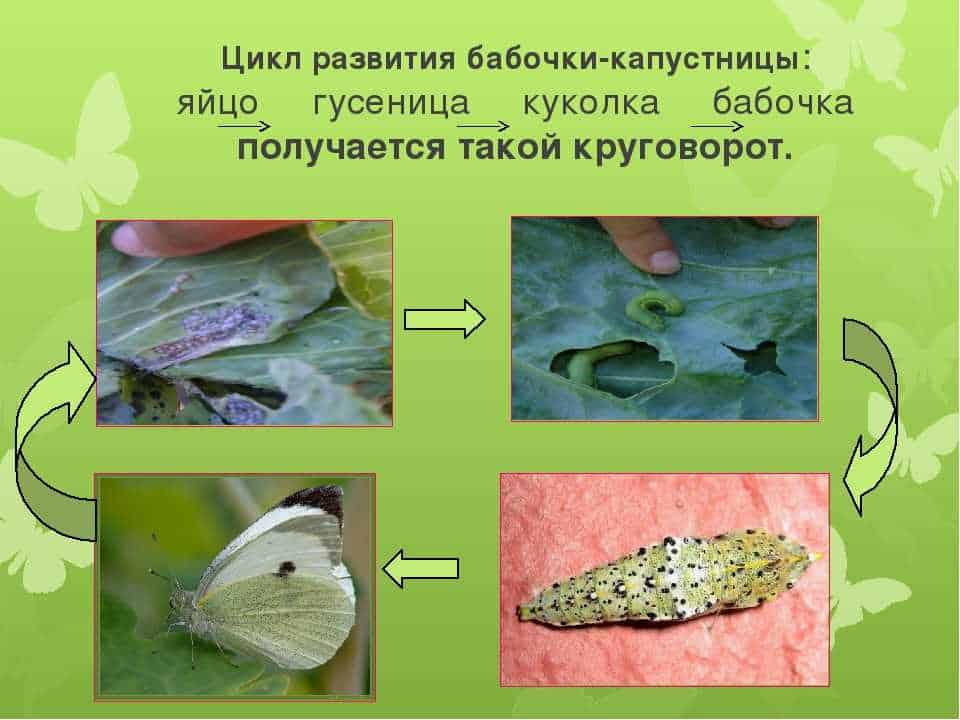
When the caterpillar reaches a certain size, it turns into a chrysalis. The chrysalis is a motionless stage during which the caterpillar transforms into a butterfly. Complex processes occur inside the chrysalis, resulting in the formation of the wings, legs, and other body parts of the future butterfly.
The pupa can be in this state from several days to several months, depending on the type of butterfly and environmental conditions.
adult butterfly
And finally, when the transformation process is completed, the pupa splits, and an adult butterfly flies out of it. An adult butterfly has wings that allow it to fly and reproduce.
An adult moth usually spends most of its time exclusively looking for food and a breeding partner. It also plays an important role in plant pollination and biodiversity conservation in nature.
Ecology
Ecology is a science that studies the interaction of organisms with each other and with the environment. It studies the influence of environmental factors on the life of all organisms, as well as the influence of organisms on the environment.
Biodiversity — one of the main aspects of ecology. It describes the many species of living organisms, their genetic diversity, and the ecosystems in which they exist. Biological diversity plays a key role in maintaining the stability of ecosystems and providing a living environment for all organisms.
Environmental factors — are conditions that affect the life and development of organisms. These include climatic conditions such as temperature, precipitation, and lighting, as well as chemical and biological factors. The interaction of these factors determines the possibilities and limitations for the life of organisms in a particular area.
The role of man in ecology
Man has a significant impact on the environment and biological diversity. Changes in the natural environment, air, water and soil pollution, improper use of natural resources - all this leads to a violation of the ecological balance and threatens the extinction of many species.
However, people also have the opportunity to positively influence the environment. Through environmental education, conservation and the sustainable use of resources, we can preserve biodiversity and ensure the well-being of all organisms on the planet.
Nutrition
Nutrition plays an important role in the life cycle of a butterfly. It depends on its type and stage of development. Some butterflies feed on the nectar of flowers, others prefer fruit juices or tree bark.
caterpillars
Caterpillars, the first stage of butterfly development, usually feed on plant materials. They may eat leaves, flowers, stems, or fruits of plants. Some caterpillars have specific preferences and only feed on certain types of plants.
Caterpillars tend to eat quite a lot to get enough nutrients for their growth and development. They can transplant from one plant to another if they have already eaten everything on the first one.
pupae

When the caterpillar reaches a certain size, it turns into a chrysalis. At this stage of the development of the butterfly, it does not feed. The chrysalis is dormant and undergoes internal transformations to become a butterfly.
During this stage, the chrysalis is completely dependent on the nutrients it has accumulated in the caterpillar stage. She uses these resources for her development without external nutrition.
butterflies
When the chrysalis finally turns into a butterfly, it begins to feed again. Most butterflies feed on the nectar of flowers. They use their long nostrils and long tongue to collect nectar from flowers.
Some butterflies also feed on fruit juices or tree bark. They use their jaws to penetrate fruit or bark and absorb the juices. This provides them with the necessary nutrients to survive and reproduce.
seasonality
The life cycle of a butterfly has a pronounced seasonality. It depends on many factors such as climate, habitat type, food availability.
In each region of the world, the seasons for butterflies can vary. For example, in temperate latitudes, butterflies most often appear in spring and summer, when it becomes warm and there is enough food for caterpillars. In tropical regions where the climate is consistently warm, butterflies can be observed throughout the year.
For some species of butterflies, seasonality is associated with migration. They can fly thousands of kilometers, moving from one place to another in search of food or breeding grounds. For example, the well-known monarch butterfly migrates from North America to Mexico and back every year.
Seasonality also affects the length of each stage of a butterfly's life cycle. Some stages may take only a few days, while others take several weeks or even months. It depends on many factors, including temperature, food availability, and the presence of predators.

